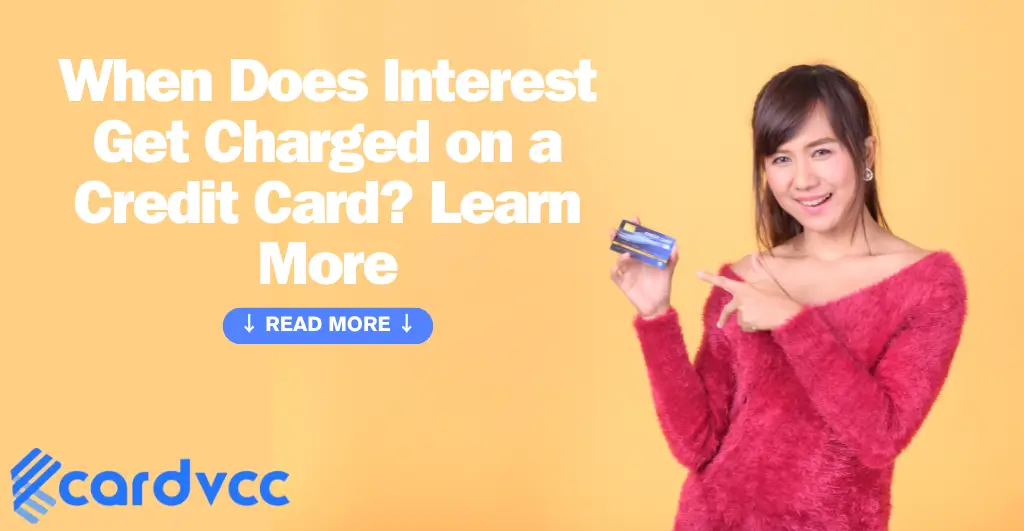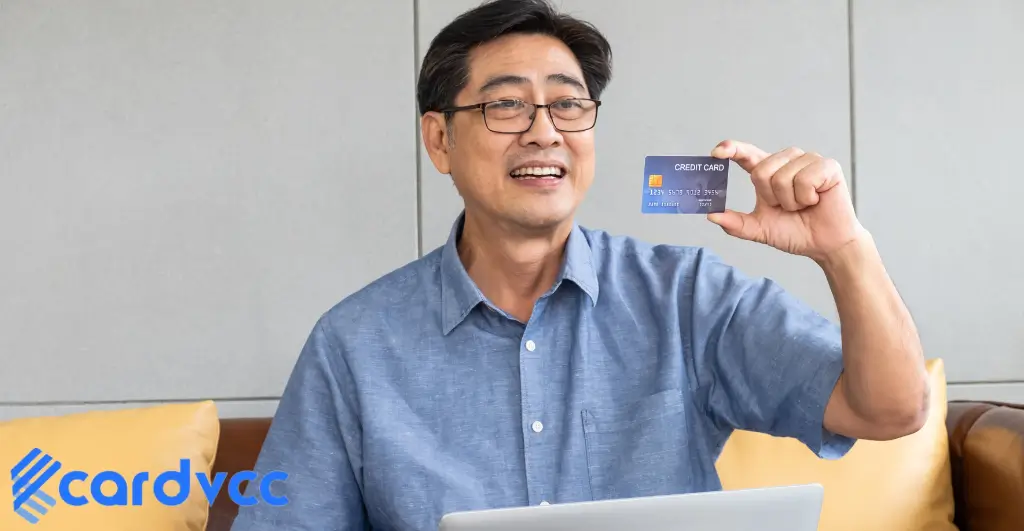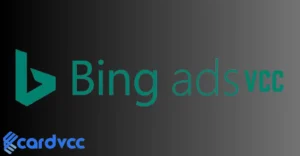Interest on a credit card gets charged when you carry a balance past the due date. It also accrues on cash advances and balance transfers immediately.

Credit card interest can be a financial burden if not managed properly. Understanding when and how interest is charged is crucial. By paying your balance in full each month, you can avoid interest charges entirely. However, if you carry a balance, interest accumulates based on the card’s annual percentage rate (APR).
Cash advances and balance transfers often incur immediate interest without a grace period. Knowing these details can help you use your credit card more wisely and avoid unnecessary costs. Always read your credit card agreement to be fully informed about interest rates and charges.
Introduction To Credit Card Interest
Understanding credit card interest is crucial. It helps you manage your finances better. Knowing when interest gets charged can save you money.
Basics Of Credit Card Interest
Credit card interest is the fee charged for borrowing money. It is calculated as a percentage of your balance. This percentage is known as the Annual Percentage Rate (APR).
Interest is typically charged on unpaid balances after the billing cycle ends. Paying your balance in full avoids interest charges. Interest is also charged on cash advances and balance transfers.
| Type | Interest Rate |
|---|---|
| Purchases | Varies by card |
| Cash Advances | Higher than purchases |
| Balance Transfers | Varies by offer |
Importance Of Understanding Interest
Knowing how interest works helps you avoid debt. It ensures you make informed financial decisions. Understanding interest can save you money in the long run.
- Paying in full avoids interest charges.
- Knowing your APR helps you budget better.
- Monitoring your balance prevents high interest costs.
Interest can add up quickly. Small balances can turn into large debts. Always be aware of your credit card terms.
Grace Period Explained
Understanding the grace period on a credit card can save you money. A grace period is the time you have to pay off your balance without incurring interest. Knowing how it works helps you manage your finances better.
Definition Of Grace Period
The grace period is a set time frame in your billing cycle. During this time, you can pay your balance in full to avoid interest charges. Most credit cards offer a grace period of 21 to 25 days.
Here is a simple example:
| Billing Date | Due Date | Grace Period |
|---|---|---|
| October 1 | October 25 | 24 days |
If you pay off your balance by October 25, you won’t pay interest.
How Grace Period Affects Interest
The grace period directly impacts how much you pay in interest. If you pay your balance in full within the grace period, your credit card company won’t charge interest. Paying only the minimum amount does not stop interest from accumulating.
Here’s a breakdown:
- Pay in full: No interest charges
- Pay minimum: Interest on the remaining balance
To make the most of your grace period, try to pay your balance in full each month. This practice can help you avoid high interest rates and save money in the long term.
Remember, not all transactions may have a grace period. Cash advances and balance transfers often start accruing interest immediately. Always read your credit card terms to understand your specific grace period details.
Billing Cycle Insights
Understanding the billing cycle is key to managing credit card interest. Each billing cycle affects how interest is calculated. This section will help you understand billing cycles and their impact on interest charges.
What Is A Billing Cycle?
A billing cycle is the period between two billing statements. It usually lasts about 30 days. During this time, all your transactions get recorded. At the end of the cycle, the credit card company sends a statement.
Here is a table summarizing key points:
| Aspect | Description |
|---|---|
| Duration | Typically 30 days |
| Transactions Recorded | Purchases, payments, fees |
| Statement Issued | End of cycle |
Impact Of Billing Cycle On Interest
Interest is charged if you don’t pay the full balance. The billing cycle determines when interest starts accruing. Paying in full by the due date avoids interest.
Here are some points to consider:
- Pay the full balance by the due date.
- Understand the grace period for interest-free purchases.
- Monitor your spending within each cycle.
By understanding your billing cycle, you can minimize interest charges. Always aim to pay on time and in full.
Types Of Credit Card Interest Rates
Understanding credit card interest rates is vital. There are different types of APR. Knowing each type helps you avoid extra charges.
Purchase Apr
Purchase APR is the interest charged on purchases. It applies to items bought with your card. If you pay your bill on time, you avoid this fee.
- Annual Percentage Rate (APR) is for purchases.
- It is usually the most common rate.
- Paying the full balance avoids it.
Cash Advance Apr
Cash Advance APR is higher than purchase APR. It applies when you take out cash using your card. Interest starts the moment you withdraw.
| Type | Rate | When Charged |
|---|---|---|
| Purchase APR | Lower | On purchases |
| Cash Advance APR | Higher | On cash withdrawals |
Balance Transfer Apr
Balance Transfer APR applies to transferred balances. It is often lower than the purchase APR. Some cards offer promotional rates for balance transfers.
- Transfer balances from one card to another.
- Promotional rates can be very low.
- After the promotion, the rate increases.
How Interest Is Calculated
Understanding how interest is calculated on a credit card is crucial. This helps you manage your finances better. Interest can be calculated using different methods. Let’s dive into the details of the Daily Balance Method and the Average Daily Balance Method.
Daily Balance Method
The Daily Balance Method calculates interest based on your balance each day. Here’s how it works:
- First, the credit card issuer tracks your daily balance.
- Then, a daily periodic rate is applied to this balance.
- The daily periodic rate is the annual interest rate divided by 365.
This method can result in higher interest charges if your balance fluctuates a lot. Let’s look at an example:
| Date | Balance | Daily Interest Rate | Interest Charged |
|---|---|---|---|
| Day 1 | $1,000 | 0.05% | $0.50 |
| Day 2 | $1,020 | 0.05% | $0.51 |
Average Daily Balance Method
The Average Daily Balance Method calculates interest based on the average of your daily balances. Here’s how it works:
- Add up your balances for each day of the billing cycle.
- Divide the total by the number of days in the cycle.
- Apply the daily periodic rate to the average balance.
This method often results in lower interest charges compared to the Daily Balance Method. Here’s an example:
| Date | Balance |
|---|---|
| Day 1 | $1,000 |
| Day 2 | $1,020 |
| Total | $2,020 |
| Average Balance | $1,010 |
Applying a 0.05% daily rate to the average balance gives:
Knowing these methods helps you understand your credit card statements better. This can save you money on interest charges.

Will virtual credit cards keep me safe from scams?
Online shopping has become very popular. But it also has risks. Scams are common. Many people worry about their safety.
Virtual credit cards are a new solution. They can help keep you safe. But how do they work? Are they safe?
What Are Virtual Credit Cards?
Virtual credit cards are digital versions of your real card. They have a different number. But they link to your real card.
When you use a virtual card, the merchant never sees your real card number. This adds a layer of safety.
Perks of Virtual Credit Cards
Virtual credit cards have many benefits. Here are some of them:
- Enhanced Security: Your real card number stays hidden.
- Easy to Use: You can create and use them quickly.
- Better Control: You can set limits and expiration dates.
- Reduced Fraud Risk: Scammers can’t use your real card.
Enhanced Security
Your real card number is safe. This is a big plus. If a scammer gets your virtual card number, your real card is still safe.
You can cancel the virtual card. This stops the scammer. Your real card stays safe.
Easy to Use
Creating a virtual credit card is simple. Many banks offer this service. You can also use websites like Cardvcc.
With Cardvcc, you can create a virtual card instantly. This makes online shopping safe and easy.
Better Control
You can set spending limits on virtual cards. This helps control your spending. It also limits the scammer’s damage.
You can also set expiration dates. This adds another layer of safety. After the date, the card is useless.
Reduced Fraud Risk
If a scammer gets your virtual card number, they can’t do much. You can cancel the card quickly. This stops the scammer.
Your real card is still safe. This reduces the risk of fraud.
How to Get a Virtual Credit Card
Getting a virtual credit card is easy. You can get one through your bank. Many banks offer this service for free.
You can also use websites like Cardvcc. Sign up on Cardvcc and create virtual cards instantly.
| Steps to Get a Virtual Credit Card | |
| Step | Action |
|---|---|
| 1 | Sign up on Cardvcc or your bank’s website. |
| 2 | Choose “Create Virtual Card.” |
| 3 | Set spending limits and expiration dates. |
| 4 | Use the virtual card for online shopping. |
Are There Any Downsides?
Virtual credit cards are very safe. But they have some downsides.
First, not all merchants accept virtual cards. Some only accept physical cards. This can be a problem.
Second, you need to keep track of the virtual card numbers. This can be confusing.
Third, refunds can be tricky. If you need a refund, it goes to the virtual card. If the card is expired, this can cause issues.
Impact Of Minimum Payments
Paying the minimum amount on your credit card can seem like a good plan. It keeps your account active and avoids late fees. But there’s a hidden cost. Interest charges add up quickly. Understanding the impact of minimum payments is crucial for managing your credit card debt wisely.
Minimum Payment Requirements
Credit card issuers set minimum payment requirements. This is a small percentage of your outstanding balance. Usually, it’s around 2% to 4%. Sometimes, it includes any accrued interest and fees. Paying just this amount seems easy and affordable. But it leads to long-term debt.
Consequences Of Paying Only The Minimum
Paying only the minimum has several consequences:
- Higher Interest Costs: Your remaining balance continues to accrue interest.
- Longer Repayment Period: It takes years to pay off your debt.
- Lower Credit Score: High balances relative to your credit limit can hurt your score.
Let’s break this down with an example:
| Outstanding Balance | Minimum Payment | Annual Interest Rate | Time to Pay Off | Total Interest Paid |
|---|---|---|---|---|
| $1,000 | $25 (2.5%) | 20% | 5 Years | $586 |
| $5,000 | $150 (3%) | 20% | 10 Years | $4,500 |
As you see, paying only the minimum can be costly. Your debt grows with interest charges. This impacts your financial health and credit score. Always aim to pay more than the minimum to avoid these pitfalls.
Avoiding Interest Charges
Credit card interest can be a headache. Understanding how to avoid interest charges can save you money. Here are two key strategies to keep those charges at bay.
Paying In Full
Always try to pay your credit card balance in full each month. This ensures you don’t carry over any debt. When you pay in full, you avoid interest charges entirely. Here’s how it works:
- Receive your credit card statement.
- Check the total balance due.
- Pay the full amount by the due date.
Paying in full keeps your finances healthy. It also helps maintain a good credit score.
Effective Use Of Grace Period
Credit cards often come with a grace period. This is the time between the end of your billing cycle and your payment due date. Using this period wisely can help you avoid interest charges.
| Billing Cycle End Date | Payment Due Date | Grace Period |
|---|---|---|
| 1st of the month | 25th of the month | 24 days |
During this grace period, you can pay your balance without incurring interest. Here’s a step-by-step guide:
- Note the billing cycle end date.
- Check the payment due date.
- Plan to pay within the grace period.
Remember, if you carry a balance, the grace period may not apply. Always aim to pay within this period for maximum benefits.
Common Myths About Credit Card Interest
Many people have misunderstandings about how credit card interest works. These myths can lead to costly mistakes. Let’s debunk some common myths and reveal the truth.
Myth Of No Interest On Partial Payments
Some think paying part of the balance avoids interest. This is false. Credit card interest is charged on unpaid balances. Even if you pay part of your bill, interest will apply to the remaining amount.
Consider the following example:
| Balance | Partial Payment | Remaining Balance | Interest Charged |
|---|---|---|---|
| $1000 | $200 | $800 | Yes |
Misconceptions About the Grace Period
Many believe the grace period means no interest at all. This is incorrect. The grace period only applies if you pay the full balance. If you carry a balance, interest starts accruing from the purchase date.
Here’s a clearer breakdown:
- Full payment during the grace period: No interest
- Partial payment during the grace period: Interest on the remaining balance
- No payment during the grace period: Interest on the entire balance
Conclusion And Best Practices
Understanding when interest gets charged on a credit card is crucial. It helps you manage your finances better. This section summarizes key points. It also offers best practices to manage credit card interest.
Summary Of Key Points
- Interest is charged if you don’t pay the full balance by the due date.
- Cash advances incur interest immediately.
- Balance transfers may have promotional interest rates.
- Different transactions may have different interest rates.
Tips For Managing Credit Card Interest
- Pay your balance in full: This avoids interest charges entirely.
- Understand your billing cycle: Knowing the cycle helps you plan payments.
- Avoid cash advances: These incur high interest immediately.
- Use autopay: It ensures you never miss a payment.
- Check your statements: This helps you catch errors and stay informed.

Frequently Asked Questions
When Does Interest Start On A Credit Card?
Interest starts accruing on a credit card if you don’t pay your full balance by the due date. This means that carrying any balance forward will generate interest charges on your next statement.
How Is Credit Card Interest Calculated?
Credit card interest is calculated based on your average daily balance. The daily interest rate is derived from the annual percentage rate (APR), and it is applied to your balance each day.
Can I Avoid Credit Card Interest?
Yes, you can avoid credit card interest by paying your full balance by the due date each month. This ensures that no interest charges are applied to your account.
What Is A Grace Period On A Credit Card?
A grace period is the time between your statement closing date and your payment due date. During this period, you can pay your balance in full and avoid interest charges.
Conclusion
Understanding when interest gets charged on a credit card is crucial. Paying your balance in full each month helps avoid interest. Always check your card’s terms and conditions. Keep track of your billing cycle and due dates. Smart management can save you money and improve your financial health.
Read More- How to Buy Uber Card







